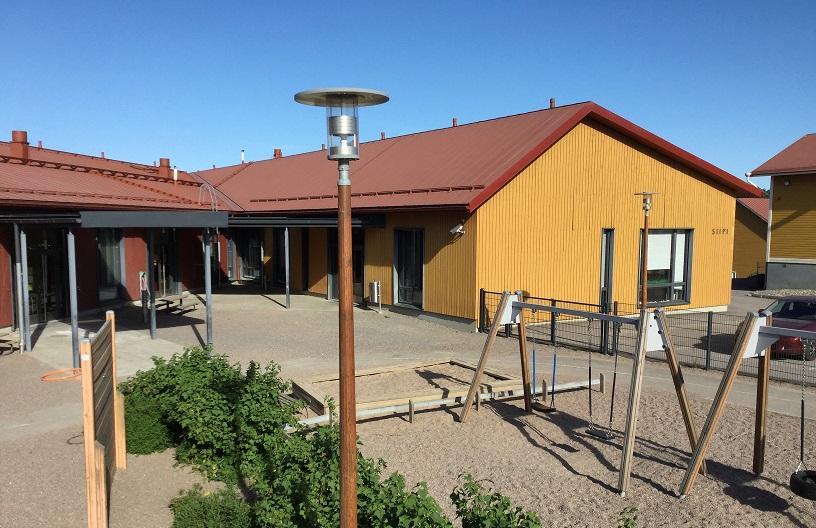

We identified that increased air quality index values, driven predominantly by increased PM2♵ and O3 concentrations, were significantly associated with asthma exacerbations and decreases in pulmonary function that occurred in the absence of a provoking viral infection. FINDINGS: Of the 208 participants from the MUPPITS1 cohort and 419 participants from the ICATA cohort, 168 participants in the MUPPITS1 cohort (98 male participants and 70 female participants) and 189 participants in the ICATA cohort (115 male participants and 74 female participants) were included in our analysis. We investigated the associations between regional air pollutant concentrations and respiratory illnesses and asthma exacerbations, pulmonary function, and upper airway transcriptional signatures by use of a combination of generalised additive models, case crossover analyses, and generalised linear mixed-effects models. We used air quality index values and air pollutant concentrations for PM2♵, PM10, O3, NO2, SO2, CO, and Pb from the US Environmental Protection Agency spanning the years of both cohorts, and matched values and concentrations to each illness for each participant. We included participants from the MUPPITS1 cohort who reported a respiratory illness at some point during the follow-up and participants from the ICATA cohort who had nasal samples collected during respiratory illness or at a scheduled visit. The ICATA cohort recruited 419 participants aged 6-20 years with persistent allergic asthma living in urban sites across eight US cities between Oct 23, 2006, and March 25, 2008, and the last study visit occurred on Dec 30, 2009. The last MUPPITS1 study visit occurred on Jan 6, 2017. The MUPPITS1 cohort recruited 208 children aged 6-17 years living in urban areas across nine US cities with exacerbation-prone asthma between Oct 7, 2015, and Oct 18, 2016, and monitored them during reported respiratory illnesses. METHODS: We performed a retrospective analysis of data from the MUPPITS1 cohort and validated our findings in the ICATA cohort. We aimed to investigate the associations between regional air pollutant concentrations, respiratory illnesses, lung function, and upper airway transcriptional signatures in children with asthma, with particular focus on asthma exacerbations occurring in the absence of respiratory virus. However, the mechanisms by which air pollution exposure exacerbates asthma, and how these mechanisms compare with exacerbations induced by respiratory viruses, are poorly understood. Outdoor air pollution has been associated with adverse respiratory effects in children with asthma.
#Emerge kullo skin#
One Sentence Summary: Food allergic sensitization is associated with altered B cell development in children with skin barrier dysfunction.īACKGROUND: Asthma prevalence and severity have markedly increased with urbanisation, and children in low-income urban centres have among the greatest asthma morbidity. Thus, we propose the Immune Repertoire in Atopic Disease (IRAD) score, to quantify this repertoire shift and to aid clinically in patient diagnosis and risk stratification. Consistent patterns of antibody rearrangement were associated with food allergen sensitization in subjects with atopic dermatitis. Unlike for food antigens, aeroallergen sensitization exhibited no effect on IgE mutation or diversity.

We also observed increased IgE diversity and increased isotype-switching to the IgE isotype, suggesting that B cell development, particularly isotype-switching, is heavily altered in the those with food allergen sensitizations relative to those without food allergen sensitizations. These results elucidate potential molecular mechanisms underlying the protective effects of pet ownership and non-antiseptic environs reported for allergic disease, and the hygiene hypothesis more broadly. This trend was abrogated in children living with pets during the first year of life. In this study, we sequenced antibody gene repertoires from a large and well-characterized cohort of children with atopic dermatitis and found that food sensitization was associated with lower mutation frequencies in the IgE compartment. Skin barrier disruption alters the landscape of antigens experienced by the immune system and the downstream impacts on the antibody repertoire remain poorly characterized, particularly for the IgE isotype responsible for allergic specificity and in early life, when allergic disease is developing. The skin is a major immune organ and skin barrier dysfunction is a major risk factor for the development of the inappropriate immune response seen in allergic disease.


 0 kommentar(er)
0 kommentar(er)
